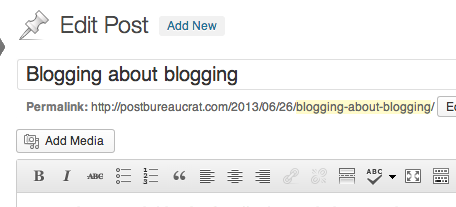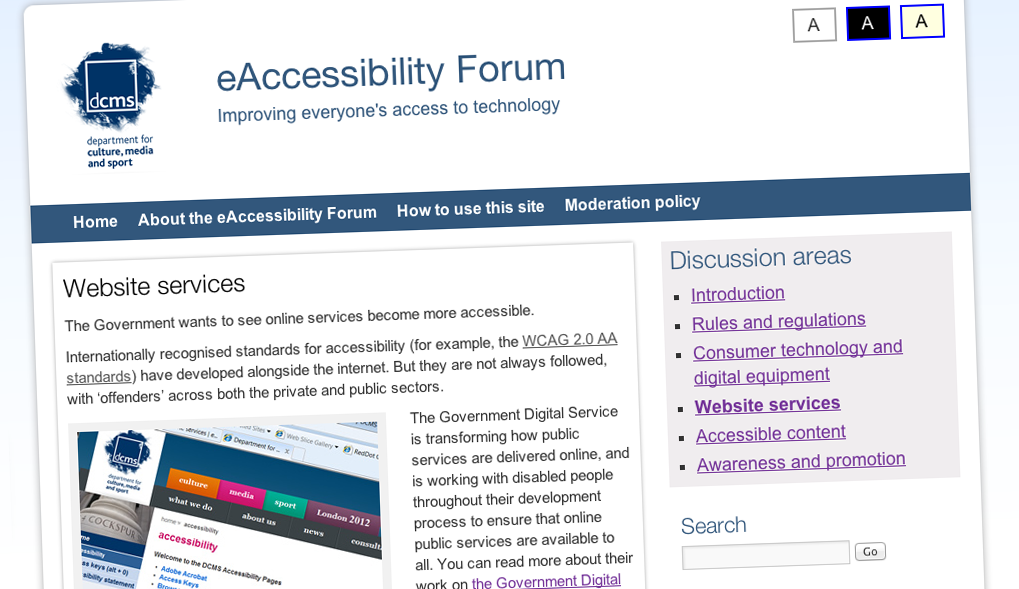I don’t know what I think about website convergence any more.
I used to think it was premature, driven by people without an appreciation for what the web could do, risking crushing small but smart teams doing good work online, and subsuming them into sites like Directgov and BusinessLink which were still feeling their way.
Then I had to lead a team with responsibility for converging sites and managing fragmented content, and I became more sympathetic to the view that, on average, lots of small sites tend to be less well-managed than a few bigger ones (but still not necessarily more cost-effective). It seems to me the financial and quality gains from supersites (like Businesslink.gov.uk, £2.15 per visitor) are less clear than politicians like to claim, as the process of convergence inevitably papers over cracks, introduces unnecessary technical and brand constraints, and adds new bureaucracy of its own. But there’s the potential to do it right, and done right, it’s better than what came before.
And anyway, we’re in different territory now: organisational convergence, let alone website convergence (RIP Consumer Focus, with one of those small, smart, innovative teams). Tomorrow, we’ll hear about plans for the most radical website convergence programme yet, following up the Cabinet Office announcement of the findings of COI’s first data collection exercise on the cost of government websites, and a review to report this week:
As part of the Government’s efficiency drive, all of the existing 820 government funded websites will be subject to a review looking at cost, usage and whether they could share resources better […]
The expectation is the review, which will report by the Spending Review in September, will aim to shut down up to 75% of existing sites and then look at getting the remaining sites to cuts their costs by up to 50% and move onto common infrastructures.
This is being run by Martha Lane Fox, Digital Champion, who will, as well as her digital inclusion and digital public services role: “also look at sharing resources and facilities and using low-cost open source products to reduce running costs.”
I’ve not seen the report, but there are at least three potential strategies to culling three-quarters of government sites:
- Really accelerate convergence of sites into Directgov & Business Link, not taking no for an answer
- Really accelerate convergence of quango sites into parent Department sites, not taking no for an answer
- Converge all corporate government sites into a single one, as in Scotland, not taking no for an answer
You’ll spot a common thread – if Martha and ministers are serious about this, it’s time to be firm. It’s not really about the webbies who have to square these ludicrous circles, but about the territorialism of policy owners who, even within a single converged supersite, believe it helps users and saves money to have two sets of interview tips for jobseekers.
So options 1 and 2 are often – but not universally – fraught with petty turf wars and bad feeling. Option 3 would make a lot of sense, as well as being colourful politics – it’s a way of rethinking how government communicates about itself on the web, and creating something with the clout to be firm with Departments about the value and purpose of their content, much like the heroes at Defra have been. It would offer a lot of scope to develop common infrastructure for common requirements like consultations, press releases, speeches, jobs, and open data. It would be a one-off opportunity to rethink content, and to think about purpose and audience. And it might mean dedicated specialists in fields like email marketing, SEO or video production able to service more of their colleagues’ needs.
But it would be hugely challenging too, for Communications leaders used to managing their own shop windows. Quangos struggling to converge their sites into their parent Department’s infrastructure would need to shift focus once again. Responding flexibly and creatively to what Departments or Ministers want, and keeping a sense of connection with users would be tough – especially if teams shrink and good webbies find jobs elsewhere. And the histories of Business Link and Directgov are not entirely happy or efficient ones. A single website for government simply cannot be allowed to cost £30m a year to run, nor be directed as a PRINCE II programme from the centre, nor be outsourced and subcontracted to the point of obsolescence.
I don’t know if there will be the courage to go the whole hog, but if so, then this a good time to do it. Open data, and open source too, have never had such active and explicit support from senior ministers, so there’s a chance it might be done right. With the money evaporated, government teams are eager to find low-cost ways to partner with online communities, and overcome historic micrositis and cede some control over the message in return for sustainable engagement. But the strongest reason is that no team has the skills and time to do it all themselves, not now the expectation and scope of digital communication is so great.
I’m sure that tomorrow will feel like a cloud. Let’s hope it has a silver lining, one way or the other.
Photo credit: Kevin Dooley



Comments
Nicely put as usual Steph.
I’m broadly in favour of 3 with all the caveats you mention above – it can’t be a world of multimillion pound budgets, Gate reviews and CRs, rather an Agile (and speedy) operation that pulls together the brightest in government and outside.
How about centrally sourced hosting, publications storage and archiving that all depts can access? From there add a few standards and common templates (that any team can customise and release for re-use) and a taxonomy that builds over time.
I think it’d need a bit of direction, but this need not be the Project Board top down approach we’ve seen up until now. Maybe I’m being horribly naive, but surely the Govt web community is up to this?
In general I support a convergence programme for websites. Far too often have I seen sites developed that are not fit for purpose and/or have cost an obscene amount of money.
However, over the last 18 months I’ve encountered a range of scenarios that have made me question whether a blanket ‘don’t take no for an answer’ convergence is a good thing.
Take for example, a quango that is supposed to be independent from government – publicly funded, but set up to be able to criticise government if needed. Should they be converged onto a single portal (like Directgov) or their sponsoring department (like BIS)? In this particular scenario, the independence of the body is an exceptionally important part of their image and a convergence has the potential seriously undermine it.
I’ve started to think that there should be a middle ground. Full convergence for most sites (probably based around the Scotland route), but with technical/back-end convergence for those that need to appear independent.
I can’t see this working with the top-down approach we’ve seen in the past though.
Hi Dafydd, I totally agree with you. It’s very easy to shoehorn organisations onto one platform with no thought about any of their needs, independence included. How about this approach:
1) One destination for all government content, built in a flexible way as described above
2) Simple stand alone and low cost sites (perhaps WordPress backed) for organisations that truly need their independence. They could still take advantage of centralised hosting, pubs storage and archiving. There would need to be a clear plan for shutting down such sites when they’ve outgrown their usefulness, ideally decided before each site is launched (so some poor webbie doesn’t have to chase people years later.)
This made me ponder and then check – you’d think gov.gov.uk or uk.gov.uk would be memorable websites to find everything you need. We don’t use them, they don’t even point to direct.gov.uk. America has gov.gov pointing to usa.gov which just shows the most popular searches. Seems sensible.
At risk of stating the obvious, I don’t think most people care very much about the structure of government websites, it’s just important to be able to find what we want at the right time. Perhaps one of the first things to check when creating new content would be to see if it’s already covered adequately in the rest of the web (I can see the objections to that already!) – there are nearly 61 million results for a Google search on ‘job interview tips’.
[…] true that there’s plenty of bad practice across the government web estate, and plenty of opportunity to join up and adopt common infrastructures. Though government speaks to many audiences, it doesn’t do so consistently well. And there […]
[…] true that there’s plenty of bad practice across the government web estate, and plenty of opportunity to join up and adopt common infrastructures. Though government speaks to many audiences, it doesn’t do so consistently well. And there […]